How to Use GitHub Metrics to Drive Software Development Strategy


.webp)
In the intricate landscape of software development, metrics play a pivotal role, akin to a navigational compass, guiding teams toward operational excellence and strategic success. These metrics, derived from various aspects of the development process, are more than mere numbers; they are insights crystallized into quantifiable forms. They provide an objective lens through which teams can assess performance, monitor progress, and gauge the efficiency of their workflows. In essence, metrics are the heartbeat of software development, offering a rhythm to which teams can synchronize their efforts for optimal results.
The integration of sophisticated software development tools with platforms like GitHub has revolutionized the way these metrics are utilized. These tools offer a bridge, turning the vast ocean of data available in GitHub repositories into structured, actionable insights. They enable teams to not only track their progress but also to forecast trends, identify bottlenecks, and fine-tune their strategies in real time. This synergy between tools and data is a catalyst for innovation, pushing the boundaries of what can be achieved in software project management.
The focus of this article is on how the strategic application of GitHub metrics, facilitated by these advanced tools, can elevate development strategies. We'll explore the transformative potential of this integration, shedding light on how it can refine development processes, enhance collaboration, and drive projects toward their intended outcomes with greater precision.
Key takeaways:
Software development tools like Keypup stand out for the provision of ready-to-use GitHub metrics templates as well as the flexibility to create custom metrics, unlocking a wide array of datasets and operations. This dual approach caters to both quick adoption for new users and in-depth, tailored analytics for advanced users.
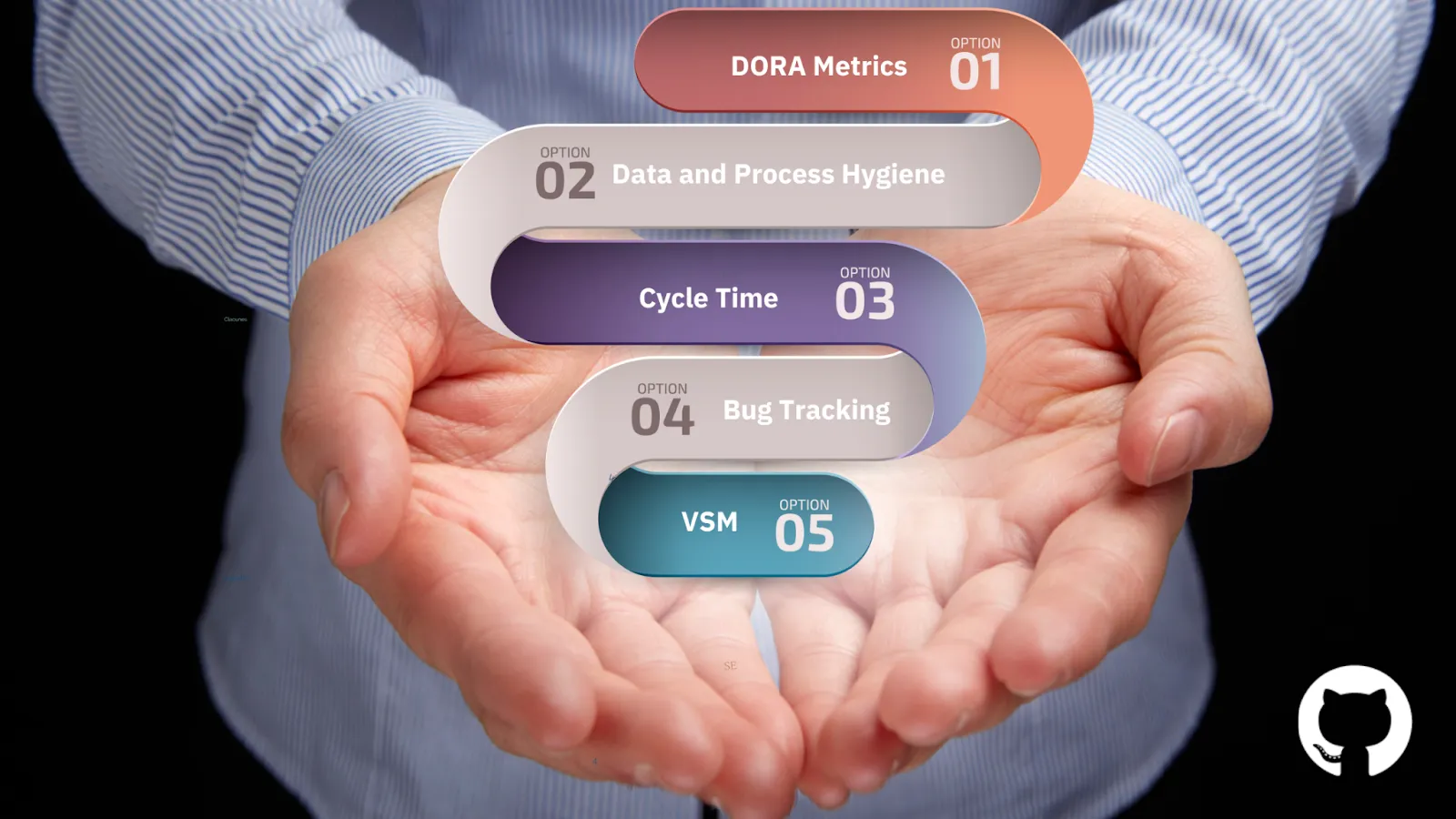
Keypup unlocks various datasets, including issues, pull requests, comments, commits, and reviews, each offering a wealth of data points like authorship, timestamps, status, and more. Additionally, Keypup enables a range of operations to manipulate and analyze this data, such as:

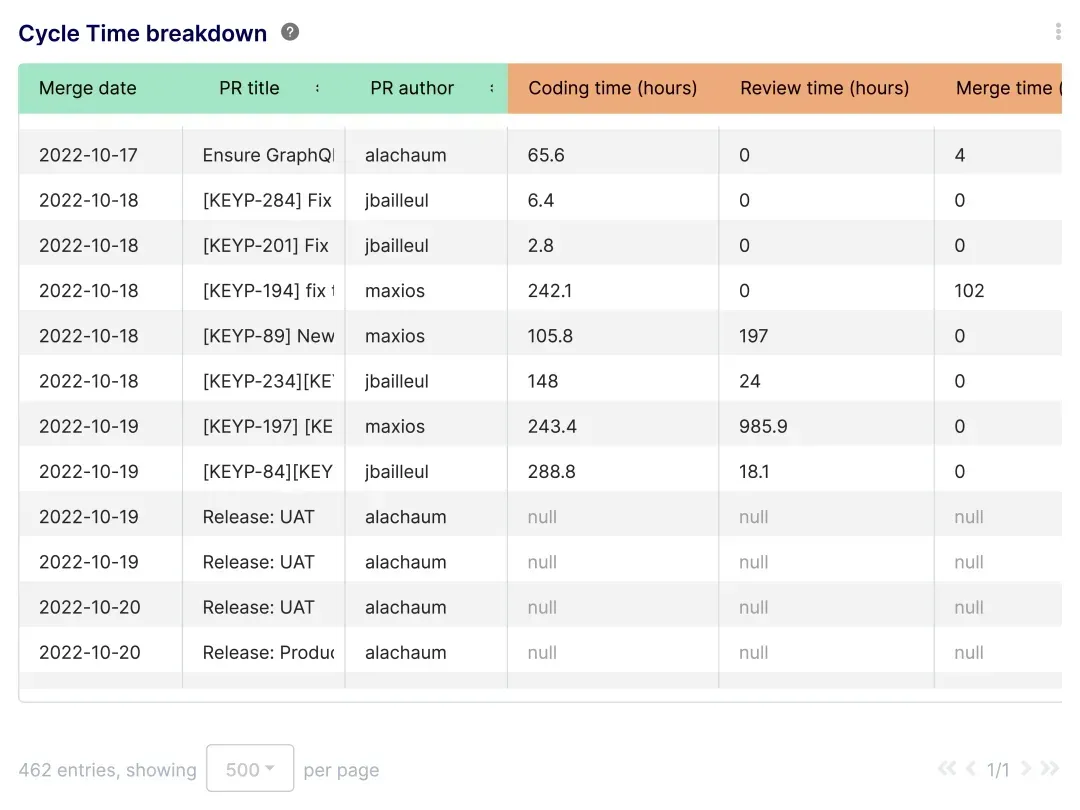

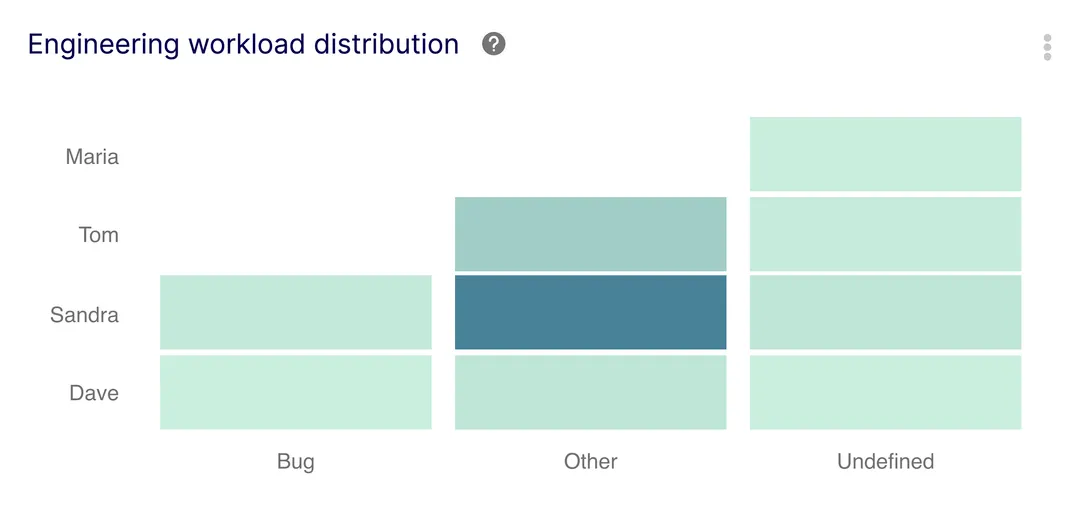
Keypup's approach to GitHub metrics, blending pre-built templates with extensive customization capabilities, provides teams with the tools to derive actionable insights and make informed decisions for strategic development and operational efficiency.
Effective utilization of GitHub metrics involves aligning them with specific development goals to ensure a focused and impactful approach. For instance, if the goal is to reduce the development cycle time, metrics like the Cycle Time Overview and Breakdown Report from Keypup can be pivotal. These metrics offer insights into various stages of the software development process, helping to identify areas that need optimization. Customizing these metrics to monitor aspects directly related to the project's objectives allows teams to gain precise insights and make strategic decisions that align with their goals.

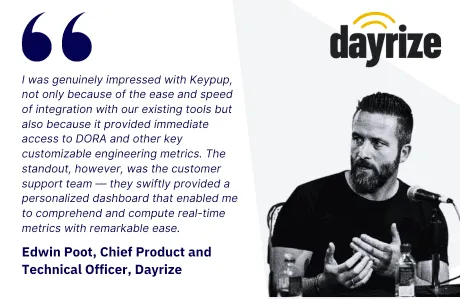
Customization is a critical aspect of utilizing GitHub metrics effectively. Keypup's array of templates, such as the Engineering Workload Distribution, Project Effort Distribution, and Lead Time for Changes templates, can be tailored to suit unique project and team requirements. Teams can adjust these templates based on their specific project goals, such as focusing on sprint efficiency or balancing engineering efforts across multiple projects. This level of customization ensures that the metrics are not only relevant but also provide actionable insights that directly contribute to achieving the project and team objectives.

By strategically aligning GitHub metrics with development goals and leveraging the customization capabilities of platforms like Keypup, teams can enhance their development strategies, leading to more efficient, transparent, and successful project outcomes.
The Cycle Time Overview and Breakdown Report are vital for enhancing workflow efficiency. These metrics provide a detailed view of the time allocation for each development phase. Teams can leverage this data to identify prolonged stages, like coding or reviewing, and implement targeted strategies for more efficient time management.

Metrics such as Merge Time Metric and Engineering Work Pattern Analysis are crucial for identifying workflow impediments. A combined view of these metrics offers a multi-dimensional perspective on bottlenecks, enabling teams to adopt specific strategies like revising procedures or introducing new tools that streamline these problem areas.
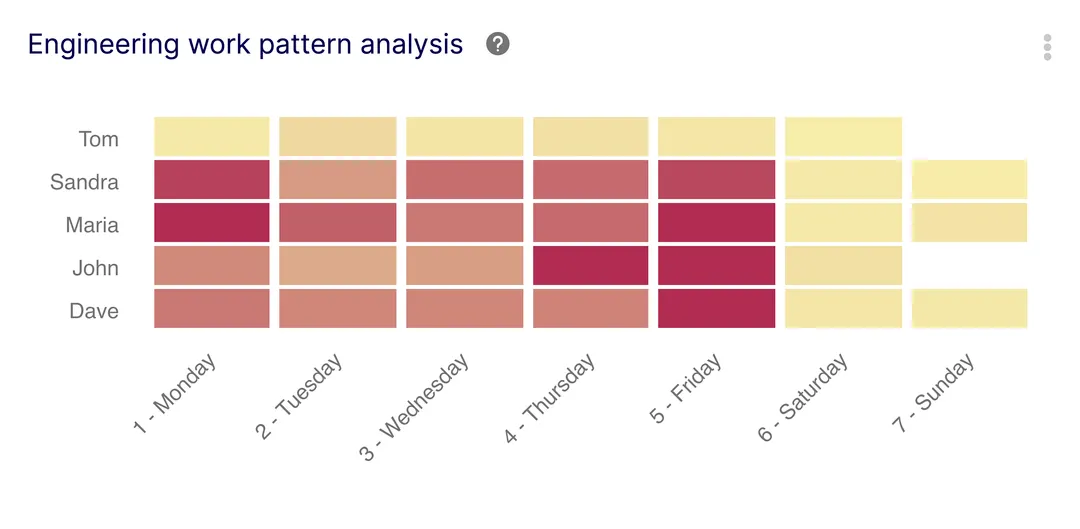
While quantitative metrics are essential for pinpointing inefficiencies, it’s crucial to balance them with qualitative feedback. This holistic approach involves integrating team satisfaction, client feedback, and other qualitative data to ensure that the focus on metrics complements overall project quality and innovation. Regular team discussions on metrics, incorporating customer feedback into sprint reviews, and satisfaction surveys can help maintain this balance, ensuring a more effective and efficient workflow.
Utilizing metrics such as Issue Queue Time and Bugs by Severity can significantly aid in setting realistic and measurable goals. Issue Queue Time helps in understanding the responsiveness of the team to new issues, aiming to reduce this time enhances agility. Bugs by Severity, on the other hand, provides insights into the quality of the codebase. Setting goals to lower the severity and frequency of bugs directly correlates with improving product quality.

Benchmarking is a critical step in ensuring that the goals set are not only realistic but also competitive. Teams can use metrics like Deployment Frequency or Mean Time To Recovery (from DORA Metrics) to benchmark against industry standards. This helps in understanding where the team stands in comparison to peers and industry leaders, providing a clear direction for improvement.
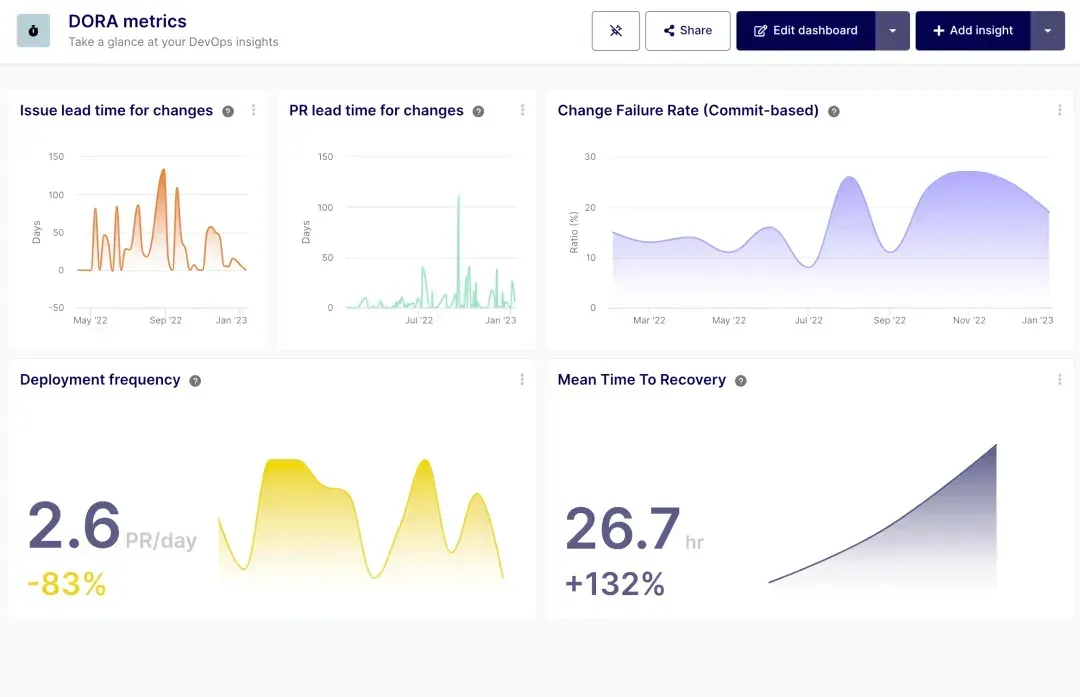
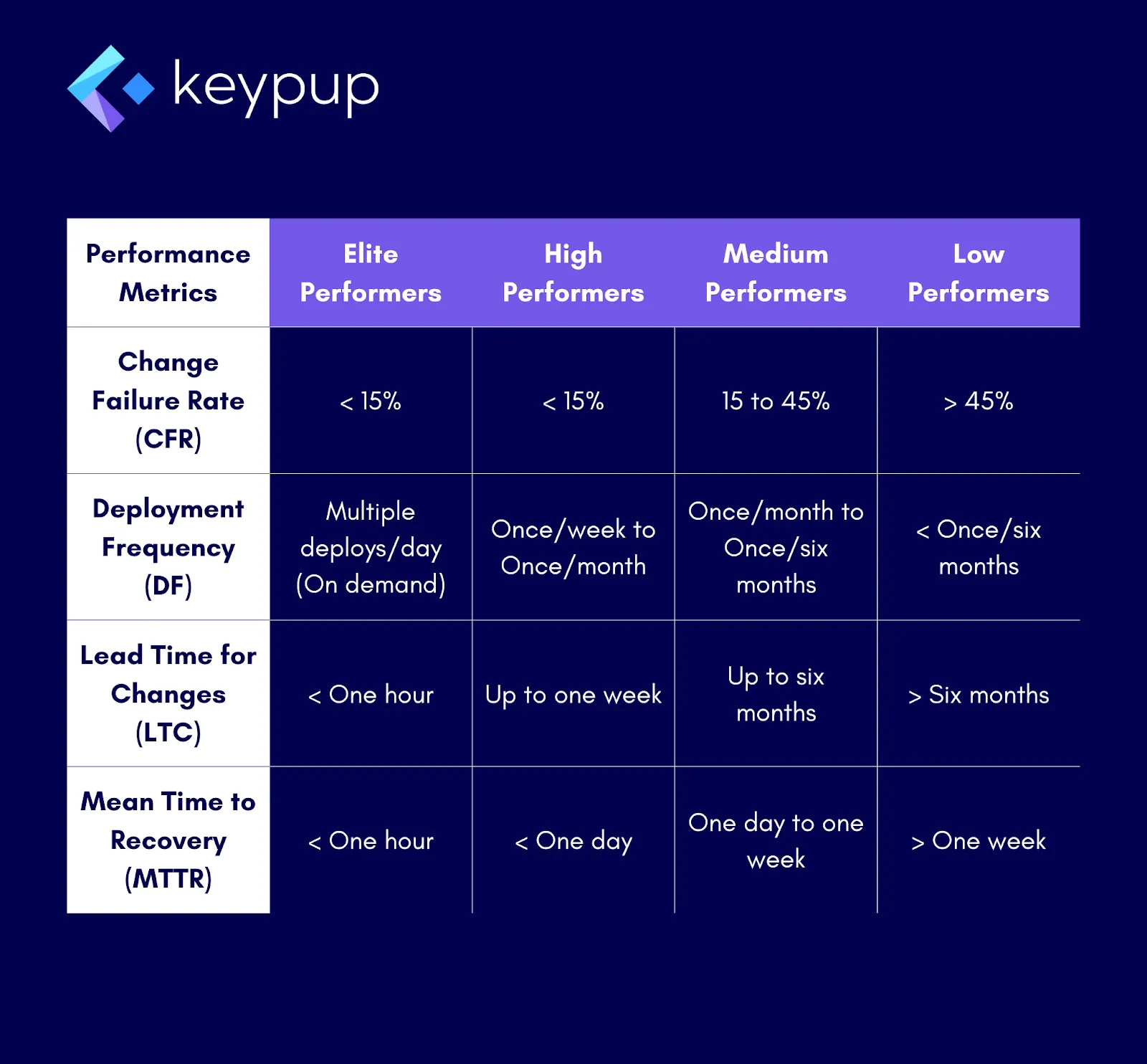
The dynamic nature of software development requires strategies that are adaptable. Regularly monitoring metrics like the Engineering Work Pattern Analysis or Project Effort Distribution allows teams to identify trends and shifts in their development process. Adapting strategies in response to these evolving metrics ensures that the development process remains efficient and aligned with the overall goals.
By leveraging GitHub metrics for goal setting and benchmarking, teams can create a roadmap for continuous improvement, aligning their strategies with real-time insights and industry benchmarks.
Metrics like Engineering Workload Categorization and Work Pattern Analysis are instrumental in managing teams effectively. By analyzing these metrics, team leaders can gain insights into how work is distributed among team members and how each member contributes over time. This data is crucial in ensuring that no individual is overburdened while others are underutilized, promoting a balanced and equitable work environment.

Metrics can also highlight areas where the team may need further development or support. For instance, if certain types of issues are consistently taking longer to review, it could indicate a need for additional training or resources in that area. Metrics like Value Stream Engineering Proficiency and Review Time help in identifying such specific areas for team development and training.

Transparent tracking of metrics like Pull Requests Review Ratio or Project Compliance Report can significantly enhance team communication and collaboration. When metrics are shared openly, team members gain a clearer understanding of the project's status and their individual contributions. This transparency fosters a culture of accountability and collective responsibility, encouraging open discussions about challenges and collaborative problem-solving.
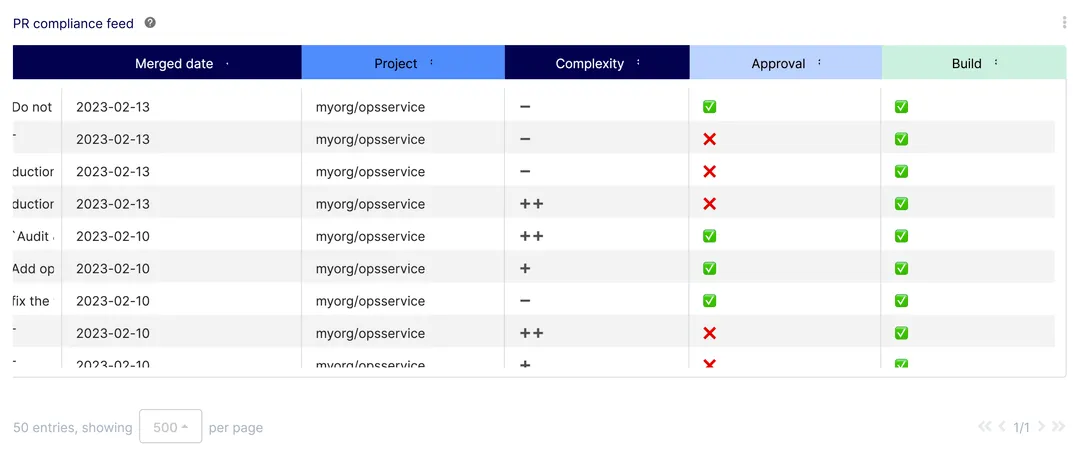
Through the strategic use of metrics, teams can not only optimize their management and workload distribution but also strengthen communication and collaboration, leading to a more cohesive and productive work environment.
The future of GitHub metrics and analytics is likely to be driven by increasing automation and AI integration. Predictive analytics, using historical data to forecast future trends in software development, is expected to become more prevalent. Additionally, the integration of AI for more intelligent issues and bug tracking, and for providing actionable insights, is anticipated to grow.

Platforms like Keypup are at the forefront of integrating advanced tools for GitHub metric analysis. These tools offer comprehensive dashboards, custom report generation, and the ability to integrate with multiple data sources for a holistic view of the development process. The trend is toward more seamless integrations, enabling teams to combine data from various platforms (like Jira, Bitbucket, and GitLab) for richer insights.
To prepare for these advancements, teams should focus on fostering a culture that values data-driven decision-making. This includes training team members on interpreting and utilizing metrics effectively and investing in tools that offer the flexibility to adapt to evolving analytics trends. Embracing these future developments will require a balance of technical acumen and strategic foresight, ensuring that teams remain agile and responsive to the ever-evolving landscape of software development.

The exploration of GitHub metrics in this article underscores their indispensable role in guiding the strategic and operational aspects of software development. Integrating platforms like Keypup with GitHub, we’ve seen how data transforms into meaningful insights, driving efficient project management and team collaboration.
Key insights:
In conclusion, GitHub metrics, when leveraged effectively, offer a roadmap to operational excellence and strategic success in software development. The future is metric-driven, and staying ahead will require teams to continuously adapt and embrace data-driven strategies.

What are GitHub metrics, and why are they important?
GitHub metrics are data points derived from software development activities on GitHub. They are crucial as they provide insights into project health, team efficiency, and progress, guiding strategic decisions.
How do software development analytics tools enhance the use of GitHub metrics?
Software development analytics tools enhance GitHub metrics by providing advanced capabilities for analysis, offering customizable templates, and enabling integration with other platforms for a comprehensive view of development processes.
Can GitHub metrics be aligned with specific development goals?
Yes, GitHub metrics can and should be tailored to align with specific development goals, such as reducing cycle times or improving code quality, by focusing on relevant metrics and using them for targeted improvements.
What is the role of benchmarking in using GitHub metrics?
Benchmarking involves comparing your GitHub metrics against industry standards or past performance to set realistic goals and track progress, ensuring competitiveness and continuous improvement.
How can teams prepare for future trends in GitHub metrics?
Teams can prepare by fostering a data-driven culture, staying informed about emerging trends like AI integration and predictive analytics, and investing in tools that adapt to evolving analytics needs.